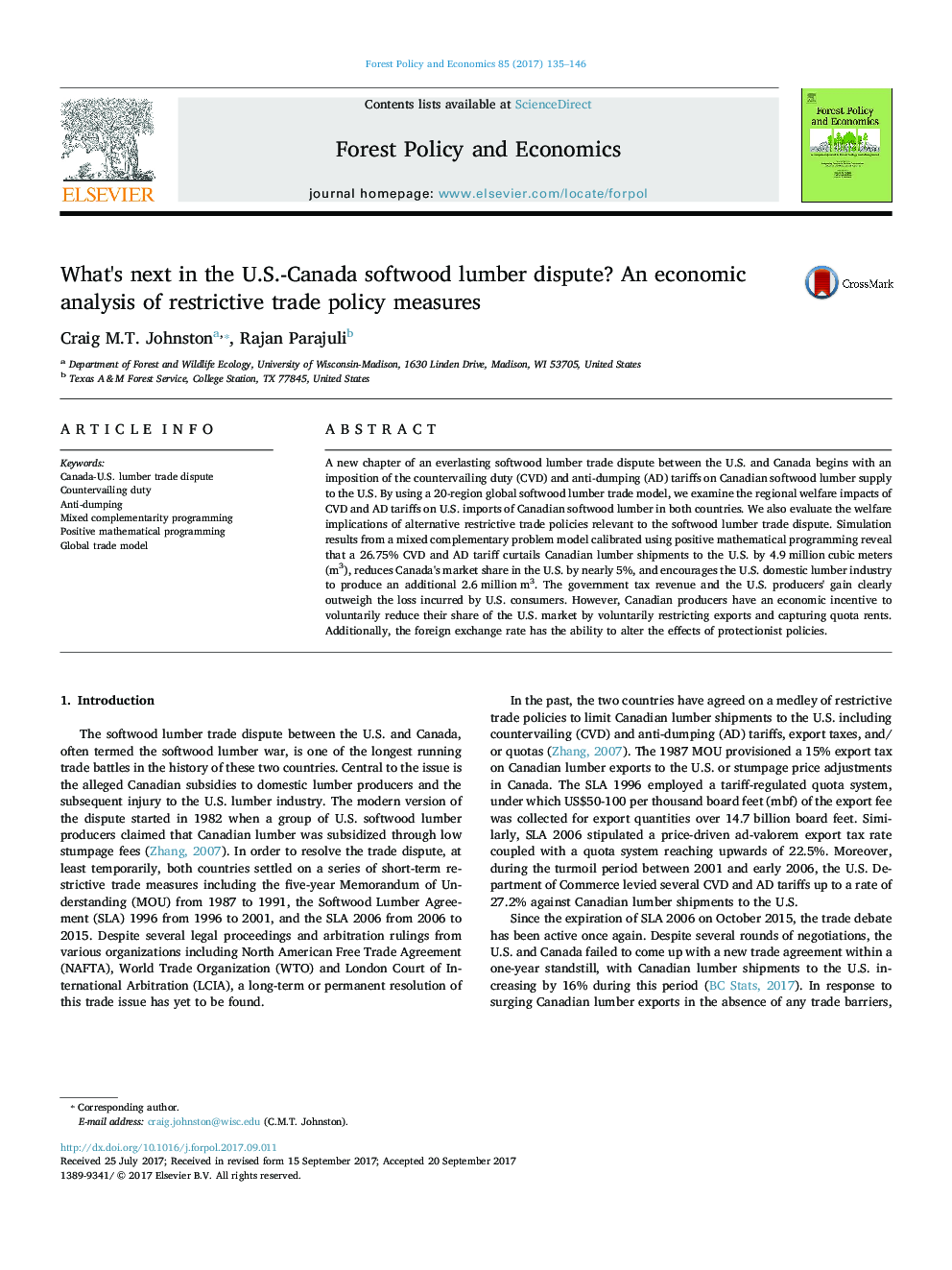| Article ID | Journal | Published Year | Pages | File Type |
|---|---|---|---|---|
| 4759728 | Forest Policy and Economics | 2017 | 12 Pages |
Abstract
A new chapter of an everlasting softwood lumber trade dispute between the U.S. and Canada begins with an imposition of the countervailing duty (CVD) and anti-dumping (AD) tariffs on Canadian softwood lumber supply to the U.S. By using a 20-region global softwood lumber trade model, we examine the regional welfare impacts of CVD and AD tariffs on U.S. imports of Canadian softwood lumber in both countries. We also evaluate the welfare implications of alternative restrictive trade policies relevant to the softwood lumber trade dispute. Simulation results from a mixed complementary problem model calibrated using positive mathematical programming reveal that a 26.75% CVD and AD tariff curtails Canadian lumber shipments to the U.S. by 4.9 million cubic meters (m3), reduces Canada's market share in the U.S. by nearly 5%, and encourages the U.S. domestic lumber industry to produce an additional 2.6 million m3. The government tax revenue and the U.S. producers' gain clearly outweigh the loss incurred by U.S. consumers. However, Canadian producers have an economic incentive to voluntarily reduce their share of the U.S. market by voluntarily restricting exports and capturing quota rents. Additionally, the foreign exchange rate has the ability to alter the effects of protectionist policies.
Related Topics
Life Sciences
Agricultural and Biological Sciences
Forestry
Authors
Craig M.T. Johnston, Rajan Parajuli,
